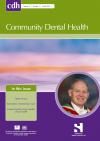Community Dental Health

- Cover Date:
- March 2015
- Print ISSN:
- 0265 539X
- Vol:
- 32
- Issue:
- 1
Comparing lifecourse models of social class and adult oral health using the 1958 National Child Development Study
© BASCD 2015 doi:10.1922/CDH_3412Angulo06
Comparing lifecourse models of social class and adult oral health using the 1958 National Child Development Study
E.K. Delgado-Angulo and E. Bernabé
Objective: To identify the lifecourse model that best describes the association between social class and adult oral health. Methods: Data from 10,217 participants of the 1958 National Child Development Study were used. Social class at ages 7, 16 and 33 years were chosen to represent socioeconomic conditions during childhood, adolescence and adulthood, respectively. Two subjective oral health indicators (lifetime and past-year prevalence of persistent trouble with gums or mouth) were measured at age 33. The critical period, accumulation and social trajectories models were tested in logistic regression models and the most appropriate lifecourse model was identified using the structured modelling approach. Results: The critical period model showed that only adulthood social class was significantly associated with oral health. For the accumulation model, a monotonic gradient was found between the number of periods in manual social class and oral health; and four out of eight social trajectories were found to be distinctive. Finally, the social trajectories model was not significantly different from the saturated model indicating that it provided a good fit to the data. Conclusion: This study shows the social trajectories model was the most appropriate, in terms of model fit, to describe the association between social class and oral health.
Key words: social class, oral health, cohort studies, United Kingdom, lifecourse models
- Article Price
- £15.00
- Institution Article Price
- £
- Page Start
- 20
- Page End
- 25
- Authors
- E.K. Delgado-Angulo, E. Bernabé
Articles from this issue
- Title
- Pg. Start
- Pg. End
- Comparing lifecourse models of social class and adult oral health using the 1958 National Child Development Study
- 20
- 25
- Barriers to providing oral health care to pre-school children– differences between paediatric dentists’ and general dental practitioners’ beliefs
- 32
- 38
- Health economic analyses of domiciliary dental care and care at fixed clinics for elderly nursing home residents in Sweden
- 39
- 43
- Tooth brushing among 11- to 15-year-olds in Denmark: combined effect of social class and migration status.
- 51
- 55
- The incidence and nature of complaints against dentists for the treatment of children in Israel from 1992–2011
- 56
- 59
